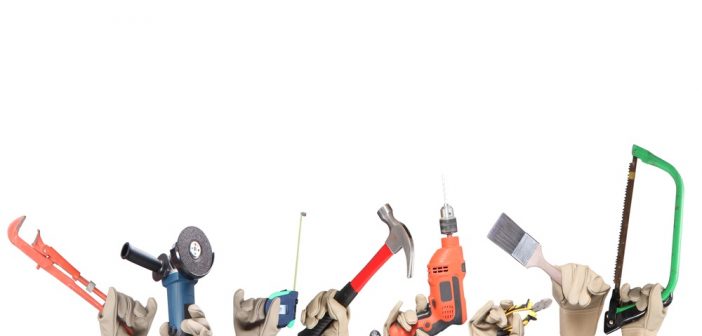Believe it or not, your roof is an essential feature of your home. It stands between the interior and the exterior. If it’s in good condition, your roof acts as a barrier against natural elements such as tree branches, debris, ice, hail, and snow. However, if your roof is in bad shape, your property can experience leaks, develop mold and mildew, and get other serious problems. Moreover, a good roof can enhance your home’s curb appeal. That said, it’s essential to have it inspected regularly. Read on this article to learn more about basic roofing supplies as well as the roofing techniques you must know from the very beginning.
Basic Roofing Supplies Checklist
Any roofing project isn’t challenging to do as long as you have the right tools and supplies in place. If you want to get the job done successfully, make sure these tools are right for you. After thorough research, here’s a list of roofing tools and equipment you must have from the get-go:
- Roofing nailers – It’s a must-have roofing tool for everyone who’s working on the roof. It can be used to get the job done quick and efficient. After all, roofing nailers allow you to drive up 100 nails per minute.
- Roofing knives – When it comes to cutting shingles, and for anything that needs a cut, you should have a roofing knife in your toolbox. Also, don’t forget to select a heavy-duty utility knife that will definitely last longer.
- Shingle removal shovel – Tearing off of the existing shingles and pushing them out of your way are two of the most important applications of a roofing shovel. It’s a proper tool for removing old shingles to make way for the new ones.
- Hatchet – It’s an essential roofing tool that you should use for setting or removing nails and tearing shingles with ease. Some hatchets are available with utility blades.
- Ripper – If you want a versatile roofing tool to be included in your toolbox, make sure you have a ripper. It can be used to remove shingles, nails or cedars without doing any damage.
- Seam roller – If you need to compress roofing membranes, you must have a heat-resistant roller in your toolbox.
- Moisture detection tools – If you want to find out the moisture content of the insulation or the roofing materials, you should get a moisture meter. After all, too much moisture in any roof is dangerous because it can result in damage and mold.
- Roof brackets – Ensuring a more comfortable and safer position while roofing is the primary function of the roof brackets. They’re often used when climbing a steep roof to provide you with a stable and more reliable work area.
- Magnetic sweeper – After the roof installation, you need to do the cleaning. So, you should have a rolling magnetic sweeper tool to pick up nails, staples, screws, and other metal debris.
- Multi-purpose cutters – If you have good cutters, cutting through composite shingles as well as metal sheets will no longer be difficult. They speed up any roofing project.
- Caulk gun – For roofing repairs, a caulking gun tool is mostly used. It’s a trendy and comfortable roofing tool to use to prevent any dripping.
- Electric drill – If you’re dealing with commercial and metal roofing, you might need an electric drill. It can be used for drilling holes in metal or concrete as well as installing screws. For a faster roof installation, choose a lightweight cordless drill.
- Metal snips – You should have good metal snips when working on metal roofing. These are handy tools used to cut and manipulate metal sheets.
- Tile nibblers – Gripping, pinching or cutting of materials like nails, sheet metal or screws is the primary purpose of a tile nibbler. They’re a convenient tool when you have to pull something from tiny spaces.
- Tool belt – If you want to increase your work speed, make sure you have a tool belt with bags and pouches before you get started.
- Ladder hoist – Getting materials on the roof is one of the most dangerous jobs. That’s why you need a ladder hoist to carry the products while climbing a ladder to automate the process.
- Harness – Again, it’s a safety tool that you should wear while working on the roof. Regardless if it’s sunny or the roof is steep, you still need to wear your harness for safety purposes. You have to tighten the straps properly to ensure a secure and snug fit.
- Soft-soled shoes with steel toe – If you want to ensure your safety on the rooftop, wear appropriate footwear. Buy slip-resistant shoes that will save you from slipping and falling off the roof. The soles should be grippy and have good traction.
- Hard hats – When working on the roof, you should always consider your safety and head protection. That being said, you should wear hard hats in areas where there’s a risk of getting injured in the head because of some falling objects.
- Ladder – Safe access to the roof means you have to use a standard extension ladder. Be sure you set it up properly, and it should be long enough above the gutter. When buying a ladder, think about the load capacity as well as the extension length so you can get the right one.
Basic Roofing Techniques You Must Know
While you might not realize but your roof works a lot for you every single day. Apart from protection against extreme weather conditions, your roof can also improve your home’s overall appearance and curb appeal. However, problems come into play when there are leaks as well as mold and mildew growth on your roofing system. Here’s a list of basic roofing techniques you must consider to prevent minor issues from becoming a costly one.
- Think about your safety first.
When trying to find out leaks, it’s vital to ensure your safety throughout the work. Even if you’re trying to fix a leak, the entire process can become dangerous. That’s why never hesitate to take your time and be patient. There’s no such thing as quick-fix so make sure your safety always comes first.
- Take precautions.
When climbing up the roof, you should take precautions to make sure you’re comfortable and safe. This is where the help of some roofing tools and equipment come into play. Wear a hard hat and rubber shoes to avoid the risk of slipping. Moreover, get the most out of the harness while working on the rooftop.
- Make sure the gutters are clean.
Most of the time, roof leaks happen because of clogged gutters. Gutters that haven’t cleaned can cause water buildup during heavy rain. So, keep the gutters clean at all times to prevent having a leaky roof.
- Avoid ice buildup.
During the winter season, ice can easily accumulate under the roof membrane, shingle, and gutters. It starts to build up once it reaches the wall line, creating an interior drip. To avoid the accumulation of ice in your roofing system, make sure you have proper ventilation, ice and rain shields, and a drip edge. Doing so can help keep more money on your pocket.
- Prevent dry rot.
Due to lack of ventilation, a dry rot might happen. If the repair takes place in the middle of the roof, there’s a possibility that the plywood might be damaged. As a result, the roof will sag in and lead to cracked shingles, and then leaks. Thus, install a ridge vent to prevent dry rot if you have a soffit vent. Drill holes through the vent so that cold air comes in through the bottom.
- Check materials.
Inspect materials including shingles and nails before you get on the roof. Sometimes, faulty installation of the shingles can result in water leaks. So, check whether the nails are nailed too low to avoid it from pushing back up.
- Inspect valleys.
Mostly, valleys are also called the ridge. It’s the place where two roofs come together. That’s the reason why valleys are the common places for leaks. With that in mind, check the valleys from time to time if you don’t want to spend more money on a costly repair or replacement later on.
- Eliminate leaks.
Eliminating leaks can be very helpful. However, you should not be discouraged if you fail to find a leak. It’s the process of removing the possible spots for leaks. When you haven’t seen any leak in a particular area, have it covered, install the shingles back and have it sealed watertight. You can do the same process to other areas.
Conclusion
It would be best if you never took your home’s roof for granted. Hopefully, we’re able to help you learn about the different Precision roofing supplies as well as the techniques you should know. If you’re doing a DIY project, this article can be handy. However, if you worried about falling and slipping, you can hire a professional roofer to do the work for you.




